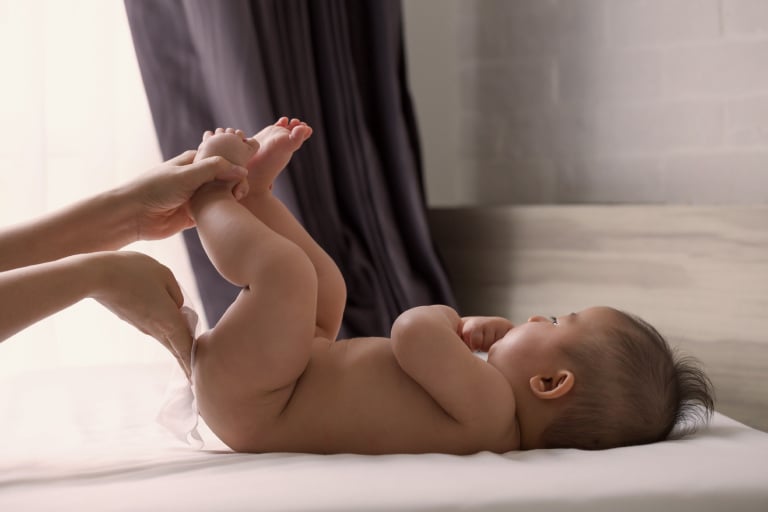Everyday Diaper Tips
Wrapped In Care: How to plan for your baby’s diapering needs

Stock Up
Diapers are going to be something you’ll never want to be without. There’s nothing worse than not having one when you need one. Most experts agree that it’s wise to keep more on hand than you think you’ll need and plan ahead for at least one size up, in case your child has a fast growth spurt. That way, you’ll be prepared. Make sure you fully stock your baby’s diaper bag as well, so you’re never caught without what you need, even when you’re out and about.Changing Frequency
Changing your baby as soon as you notice he’s soiled can help avoid pesky (and painful!) diaper rashes, since bacteria, yeast and urine can be prime causes of rashes. A good general guideline is to change your child’s diaper before feeding and anytime you notice their diaper is soiled. Since you won't want to wake your baby up in the middle of the night just for a diaper change, plan to do a quick change before every nighttime feeding.Helpful Features
Diapers may seem simple, but there are some seriously high-tech features that can make a huge difference. For instance, Huggies® has a variety of thoughtful upgrades that help make diapering more comfortable and easy for both you and your baby. For instance, Huggies® includes the wetness indicator, which changes colors so you’ll know it’s time to change your little one. For preemies and other younger babies,Huggies® Little Snugglers® Diapers Huggies has a soft, premium liner and intake layer to help absorb runny mess and draw away wetness, which helps keep baby’s delicate skin dry. Little Snugglers also have a blowout blocker to help prevent blowouts, while Huggies® Little Movers® Diapers have a DryTouch Liner to absorb moisture on contact along with double grip strips to provide a secure, flexible fit that moves with baby. You can also look for other features according to your preferences and baby’s needs, such as fragrance-free, hypoallergenic and a soft, stretchy waistband. There are even Huggies® Little Swimmers® Swim Pants, designed to keep your child comfy in a sprinkler, at the beach or in a pool.Sized Right
When your baby bursts into your world, it might be hard to imagine your son or daughter being anything other than that teeny, tiny being who captured your heart. But, as experienced parents will tell you, babies grow quickly. While you’ll think about bigger onesies and cute baby socks to fit her growing feet, you’ll also want to make sure you’re getting the right-sized diapers. Some indicators that your baby is ready to size up include: 1. Frequent leaks or diaper blowouts One of the obvious signs of a too-small diaper is when your little one is constantly leaking through or having "blowouts." Some parents may jump to the conclusion that the problem lies with the brand, in reality, a diaper that’s too small won't be able to contain your little one's messes. Try sizing up and see if that eliminates the problem. 2. Follow the product sizing instructions If your child is approaching the upper limit of the diaper's weight range (i.e., you have a 16-pound baby in diapers rated for 12- to 18-pounds) it may be time to consider a switch. The weight limits are based on average-sized babies, but not all babies are shaped the same. Try different sizes and see what works best for your child. 3. Red marks Red marks on baby’s thighs is a telltale sign that the diapers are too snug. The elastic around the leg should have some stretch, but if it’s too small, it won't fit properly and will create red marks, indicating it’s time to move up a size. 4. Check the waist if you're having difficulty connecting the diaper tabs at your baby's waist, that could be a sign that it's time to move up a size. A diaper should close easily without having to tug and pull at them. Also, consider the rise of the diaper. A properly fitting diaper should come just slightly below your little one's belly button. If it's fitting a little more like a low rise, it's time to move on up!
Have more questions about diapers? Huggies is here to help! Sign up for our
email newsletter or send us a note.













